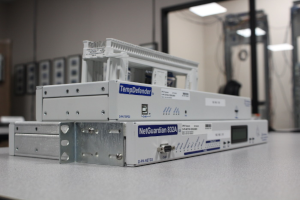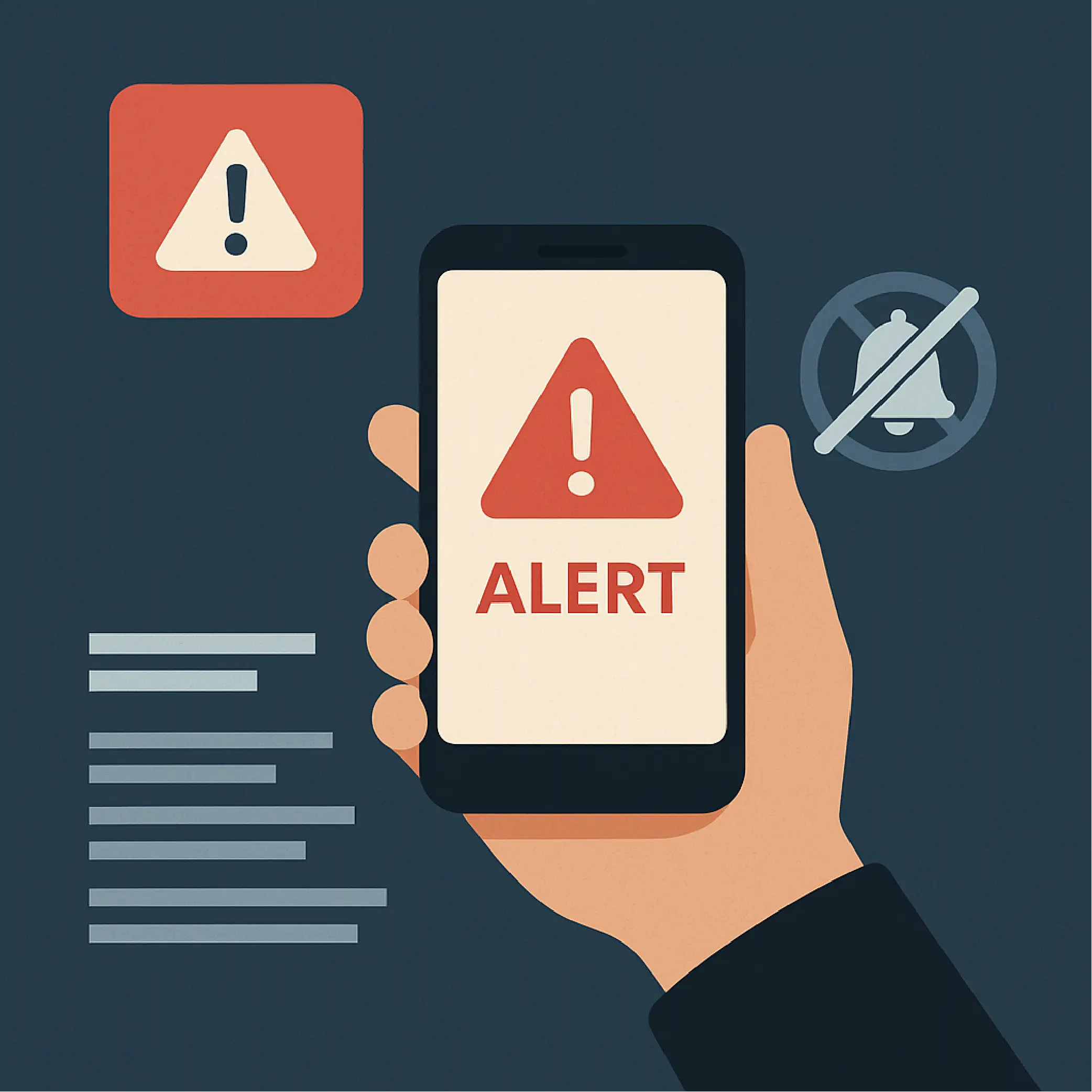Check out our White Paper Series!
A complete library of helpful advice and survival guides for every aspect of system monitoring and control.
1-800-693-0351
Have a specific question? Ask our team of expert engineers and get a specific answer!
Sign up for the next DPS Factory Training!

Whether you're new to our equipment or you've used it for years, DPS factory training is the best way to get more from your monitoring.
Reserve Your Seat Today"Mobile monitoring" sounds like a dream - until it turns into a nightmare.
You've probably heard the pitch before: "Get your alarms anywhere. Monitor your remote sites from the palm of your hand" with your smartphone. It's compelling - and it's true. But only if you do it right.
Modernizing your network operations center (NOC) monitoring to include mobile access is absolutely the right move. But I've worked with too many teams who discovered the hidden pitfalls after rollout. These include alert fatigue, broken apps, and having no visibility at all in coverage-dead zones.
Let's walk through the 7 biggest problems with creating a "mobile NOC" for monitoring so you can avoid common traps. I'll also show you how DPS clients are successfully monitoring hundreds of hard-to-reach sites every day.

Just because a site loads on your smartphone doesn't mean it's usable on a smartphone.
The problem is many "mobile-friendly" monitoring tools are just downsized versions of a desktop interface. What you end up with is a frustrating experience filled with tiny buttons, excessive scrolling, and the inability to do real work.
You might be able to see alarms, but can you acknowledge them, silence them, or trigger relays? If your techs can't take meaningful action in the field, what's the point?
To fix this, make sure your monitoring system offers a touch-optimized web interface designed specifically for mobile use. At DPS, our RTUs and the T/Mon alarm master support fast mobile interfaces with full functionality.
You'll be able to:
That's what true mobile usability looks like.
More data is not always better - especially when you're drowning in it.
It becomes problematic when too many alerts overwhelm your team. We call this alert fatigue, and it's a major problem in both NOCs and field operations.
When your phone buzzes 40 times an hour for minor issues, you start to tune them out. That means you risk missing the one alert that actually matters.
Avoid this by using smart alerting strategies like:
T/Mon's alarm processing engine is great for this. Based on your alarm severity and notification choices, you'll only get the alarms that actually need attention - reducing response time and avoiding burnout.
Apps may seem convenient (and they usually are), but they come with hidden risks:
The last thing you want during a power failure at a remote site is to open your alarm app and get an error message.
Use browser-based mobile interfaces to prevent running into this issue. A well-designed HTML5 dashboard works on any phone, tablet, or laptop with a browser. There are no downloads, no updates, and no compatibility issues.
DPS remotes like the NetGuardian 832A, 216, and DIN models all come with responsive web interfaces. You can log in securely from any device to view status, acknowledge alarms, and take action.
If your mobile monitoring system requires you to open inbound firewall ports, you're exposing your network to serious security risks.
Hackers actively scan for open ports. Once they find one, it becomes a doorway into your critical infrastructure. For industries like telecom, power utilities, and railroads, this is simply unacceptable.
If you need this level of security, make sure you design your system to report alarms outbound only, so your core network stays protected.
Here's how security-conscious DPS clients do that:
By keeping your monitoring traffic outbound-only, you preserve both visibility and security.
Every additional device between your RTUs and your master station is a potential point of failure. Third-party gateways introduce:
We've seen clients lose visibility for hours - all because a cloud gateway went down. Both you and your monitoring devices are online - but the connection between you is "in the cloud".
The fix involves reporting alarms directly to your alarm master without middlemen. At DPS, we encourage direct RTU-to-T/Mon communication.
This gives you:
By cutting out unnecessary layers, you increase reliability and decrease headaches.
Without acknowledgment tracking, your team has no way to confirm if someone is responding to an alarm.
This leads to:
This might seem like a small issue until it costs you a site outage and a six-figure SLA penalty.
To fix this, be sure your RTUs and master station support alarm acknowledgment and user tracking.
With T/Mon and DPS remotes, you can:
Now you know exactly who's doing what - and when.
Not every site is lucky enough to have strong LTE or high-speed internet.
Areas like remote mountain sites, desert towers, and underground facilities often have zero coverage - and are frequently the most critical to your network.
When these sites go dark, you lose visibility. That's when preventable outages become expensive surprises.
Avoid this issue by monitoring hundreds of these "unreachable" sites using specialized techniques.
At DPS, we believe no site should go unmonitored. Even if a site is completely off the grid, we have ways to get you visibility and control.
There are 3 proven strategies we use for clients every day:
Think of Orderwire as a private, site-to-site voice line - available even when cell service is unavailable.
It enables:
This is critical when a tech is on-site and needs support, but has no cell signal. They simply pick up the phone and get immediate help.
The best part is there are no recurring fees or dependency on the public switched telephone network (PSTN), which is undergoing its own rapid modernization.
If the LAN goes down, it's no problem.
DPS RTUs like the NetGuardian 216 can automatically failover to SMS reporting.
These RTUs:
This is your backup plan when IP paths fail. Your team stays informed with actionable alerts, not just "device offline" messages.
Some DPS RTUs act as multi-purpose site hubs, combining:
This gives your technicians access to SCADA interfaces, diagnostic tools, and site documentation - without requiring extra hardware or satellite backhaul.
It's like installing a mini-NOC at the site, giving your team all the tools they need - even in bandwidth-starved locations.
Your monitoring needs to be:
The cost of doing it wrong isn't just some nebulous inconvenience. You end up with lost data, missed alarms, and costly outages.
At DPS, we've spent 30+ years building rugged, secure, and battle-tested remote monitoring systems. Our clients include:
We've seen just about everything, from snowy mountain repeater sites to desert shelters with no power or phone lines.
We design solutions that solve real-world problems, like yours.
Whether you need a simple mobile dashboard or full visibility into your "unreachable" sites, we'll custom-tailor a monitoring system that gives you peace of mind - and eliminates guesswork.
If you're struggling with unreliable mobile monitoring, or you're planning a rollout and want to do it right the first time, give me a call.
Call us at 559-454-1600
Email: sales@dpstele.com
We'll review your network, your coverage gaps, and your mobile needs. Then we'll build a custom proposal showing how to get total site visibility - without compromise.
You can't afford to leave your most remote sites in the dark. Let's make sure every part of your network gets the monitoring it deserves.

Andrew Erickson
Andrew Erickson is an Application Engineer at DPS Telecom, a manufacturer of semi-custom remote alarm monitoring systems based in Fresno, California. Andrew brings more than 18 years of experience building site monitoring solutions, developing intuitive user interfaces and documentation, and opt...